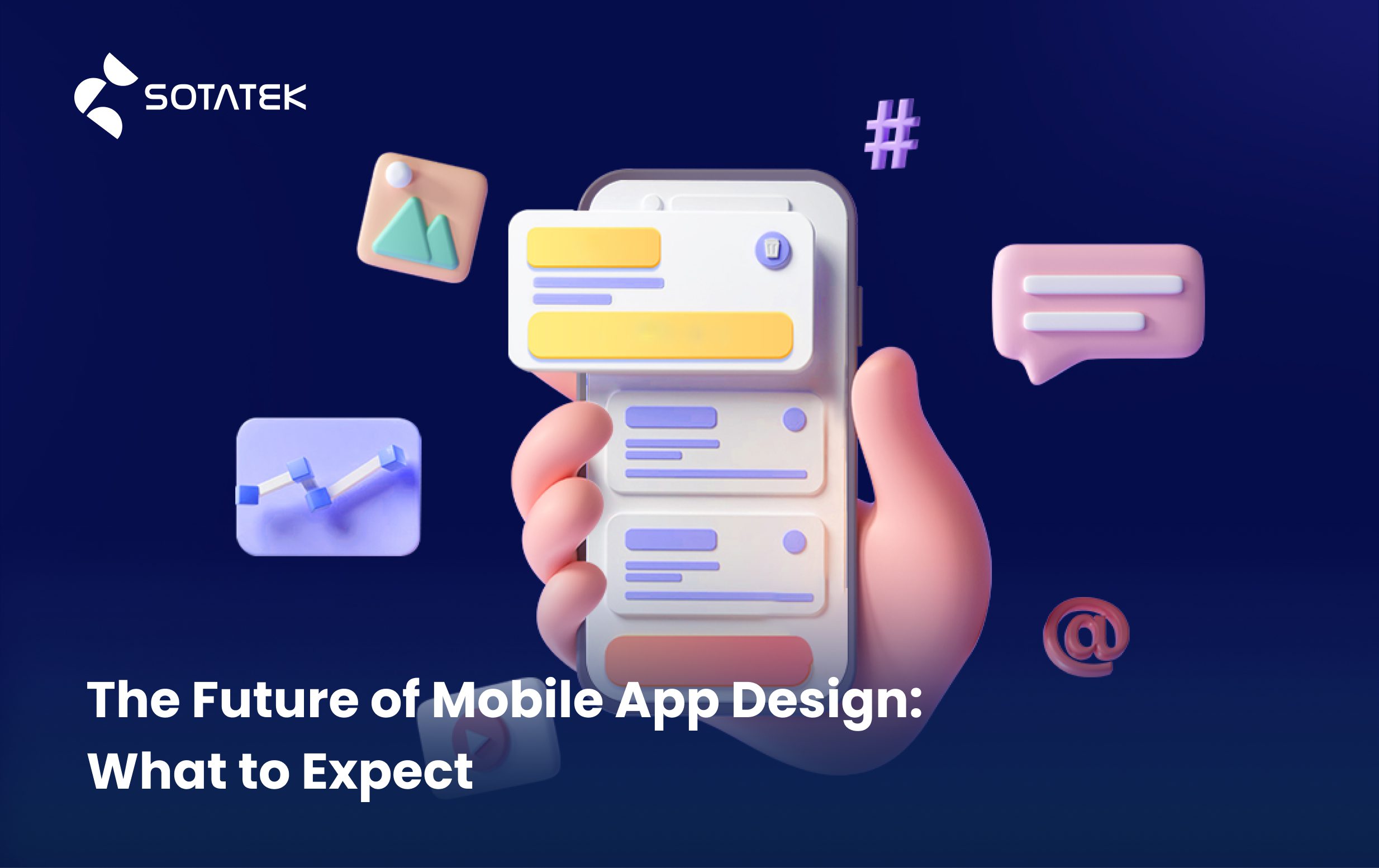Mobile app design has come a long way since the early days of smartphones, and it continues to evolve at a rapid pace. As technology advances and user expectations shift, designers must stay ahead of the curve to create engaging and intuitive experiences. In this blog post with SotaTek, we'll explore the future of mobile app design by discussing emerging trends and making predictions about the direction this dynamic field is heading.
Related: What Are Top Mobile App Trends 2023 to Follow?
1. Minimalist and Clean Interfaces
The trend towards minimalism in app design is likely to continue in the future. Users appreciate clean, uncluttered interfaces that focus on essential elements and intuitive navigation. With limited screen real estate on mobile devices, designers will prioritize simplicity and clarity to enhance user engagement and reduce cognitive load. Many popular apps like Google Calendar, Airbnb, Medium are now all using minimal interfaces.

Airbnb’s 2022 newly released app layout
2. Dark Mode and Customizable Themes
Dark mode has gained popularity due to its aesthetic appeal and potential battery-saving benefits on OLED screens. Nowaday, almost every popular app offers a dark mode option, for example, Instagram and Google. Furthermore, In the future, more apps are expected to offer customizable themes, allowing users to personalize their app's appearance according to their preferences.

KakaoTalk’s customizable themes of their famous mascots
3. Immersive User Experiences with AR and VR
As AR and VR technologies advance, mobile app designers will have exciting opportunities to create immersive and interactive user experiences. From AR overlays in retail apps to VR-driven gaming and training applications, these technologies will significantly impact the way users interact with mobile apps. Starting from the famous game Pokemon Go, which introduced us to the world of VR & AR in mobile gaming, to more real life experienced examples like IKEA interior app and Nike Fit Digital Measurement, we are sure to expect more from this technology in mobile apps in the near future.
4. Gesture-Based Navigation
With the rise of bezel-less and foldable devices, gesture-based navigation is becoming increasingly popular. With Apple having their guidelines for gesture in-apps to Android established their gesture system from Android Pie, gestures are now becoming the norm and standard in app design. In the future, designers will explore innovative ways to replace traditional buttons and menus with intuitive gestures that provide a seamless and engaging user experience.

Basic gestures for apps
5. Voice-First Interactions
Voice assistants and voice-enabled devices have changed the way users interact with technology. Voice-first technology is often seen in voice-first devices like smart speakers enhanced with screen but it is now expected to be available more on screen devices like smartphones and tablets. Mobile app design will prioritize voice-first interactions, allowing users to perform tasks, search for information, and control the app using natural language commands.
Read more: Don’t Miss Out On Top 5 Must-have Mobile App Features!
6. Inclusive Design and Accessibility
The importance of inclusive design will continue to grow in the future. Mobile app designers will focus on creating interfaces that are accessible to users with disabilities, ensuring that everyone can use and enjoy the app regardless of their abilities.
7. Personalization and AI-Driven Interfaces
Artificial intelligence will play a significant role in the future of mobile app design. AI algorithms will analyze user behavior, preferences, and context to deliver highly personalized experiences, from content recommendations to dynamic interfaces that adapt to each user's needs.
8. Augmented Data Visualization
Data visualization in mobile apps will become more sophisticated and interactive. Augmented data visualization will enable users to explore complex datasets in real-time, providing valuable insights and improving decision-making processes. For example, health apps such as Apple Health or Strava display their information and accumulated data in an organized manner, allowing users to understand easily.

Apple Health app data visualization
9. Microinteractions and Animations
Microinteractions and subtle animations add delightful elements to app interactions. Microinteractions are small interactive segments in UI which provide visual feedback and guide users. The small shaking when entering wrong passwords or the floating moving dots when someone is typing in the conversation are some of the small examples of microinteractions. In the future, designers will leverage these small details to enhance user engagement, create smooth transitions, and provide feedback that keeps users engaged.

Password error animation
10. Final thoughts
The future of mobile app design is full of exciting possibilities. From minimalist and clean interfaces to immersive AR and VR experiences, the landscape is constantly evolving to meet the changing needs and expectations of users. By embracing these emerging trends and predictions, designers can craft mobile apps that captivate audiences, drive engagement, and shape the future of digital experiences. Staying ahead of the curve in this dynamic field is essential for success in the ever-evolving world of mobile app design.



